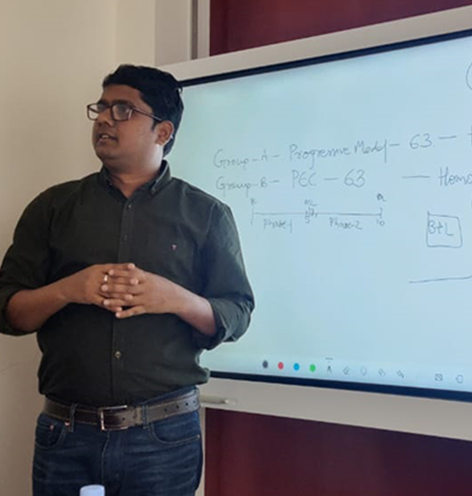“Parlez-vous français?” I was often asked this question during my recent trip to Cote
d’Ivoire. Most people seem to speak French fluently in this country. But not me.
I have visited Côte d’Ivoire at least thrice before, and each time my inability to
communicate in a local language (or French) has landed me in difficult situations. From
relying on bilingual colleagues to increasingly advanced translation tech, I have now
tried multiple ways to work smoothly in an unfamiliar language environment.

I never thought I’d struggle with language. After all, growing up in India, learning multiple languages was a necessity. While my mother spoke to me in a dialect of Bhojpuri at home, I learned Hindi from my environment. And when I started going to school, I also began to study in English and Marathi. Even in Anglophone Sub-Saharan Africa, English became my go-to as I navigated my work as a development professional. For instance,
when supporting Zambia’s Teaching at the Right Level (TaRL) intervention — Catch Up — I rely on English to communicate with fellow trainers, mentors, teachers, and even learners. But in Côte d’Ivoire? It’s been all French to me!
Over the years, technology has been steadily bridging the gap between global languages. For instance, to overcome language barriers in Francophone countries, I began utilising tools such as Google Lens and Google Translate’s Interpreter function. These innovations, in particular, have been very helpful for me. At a click of a button, I can get a sense of what signboards, presentations, or food menus say; I can even grasp some key points from conversations. Through translation websites like Google Translate and DeepL, I have also been able to navigate challenging texts.
Shocked, I tried to find my dialect of Bhojpuri on Google Translate. While I could find a version of it, the language I speak with my mother is not available on the Internet. Even in my work, I often struggle to find online resources for mother languages that many of our learners speak in Zambia or Côte d’Ivoire. Many languages continue to suffer from the digital language divide, their translations, documentation, and interpretations missing from the ever-expanding archives of the World Wide Web. Furthermore, for many individuals, accessing knowledge both online and offline has to take place in a second language, or a language of instruction used more widely in their contexts.
There is still potential to leverage technology to preserve our unique language heritages. For instance, Google recently expanded its language offerings by adding 24 more new languages, expanding its portfolio of supported languages to 133. Apps, robots and AI are also being leveraged to revive dying indigenous languages.
But technology alone cannot be the solution. We have to make an effort to respect our mother languages and encourage more people to learn and use them. We also do so at work, where the languages spoken at home and in communities by children are incorporated in the programmes implemented by Pratham International and Teaching at the Right Level Africa.
From Bhojpuri to French, I have come a long way with languages. However, my experiences have taught me that languages are not just a system of alphabets, verbs, or grammatical rules. Languages are also about cultures. As we go global with certain languages, it’s important to not only celebrate globalisation but to also put a spotlight
on what is local.
So, I leave you with an important question — how will you support your mother language today?
About the author
VIKAS VARMA is a Manager for Math Content and Training at Pratham International. Vikas supports TaRL interventions in several countries including Zambia, and Côte d’Ivoire.
This blog was edited by Tanvi Banerjee Senior Associate for Programmes & Partnerships at Pratham International.
